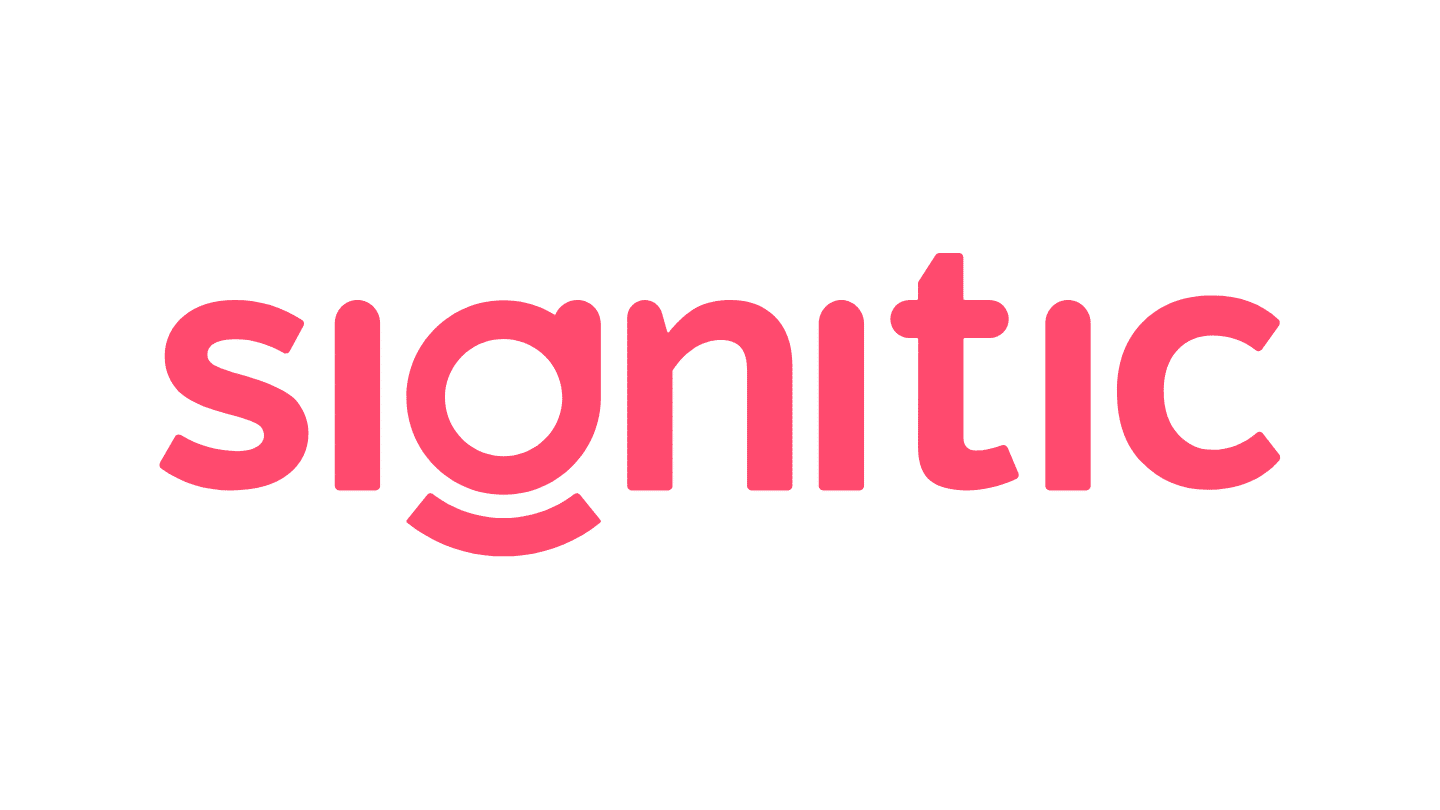Have you always wanted a complete guide to lead nurturing? Here it is! We will explain in detail how to :
- Implementing a comprehensive lead nurturing strategy
- Use lead scoring to prioritise leads and improve your conversion rates
- Create automated email sequences to warm up your leads.
The primary objective of this guide is to help you design or improve your current lead nurturing strategy. But this article will also be an opportunity to present the issues surrounding lead nurturing and lead scoring in a comprehensive manner.
Sommaire
What is Nurturing, Lead Nurturing and Customer Nurturing?
Before going into the details of how lead nurturing works, let’s start by recalling what “nurturing” means in the context of marketing.
🇬🇧 “To nurture” in English can mean “to raise”, “to grow”, “to nourish”, “to cultivate”, “to take care of”. There is always the idea of “encouraging the development of something”, to advance or advance something.
In marketing, lead nurturing is the process of developing a marketing relationship with leads that are not yet ripe for sales action to increase the chances that they will convert.
In this context, “nurture” could be defined as “warming up”. Lead Nurturing is the set of communications that take place between the moment when the individual moves from being a “prospect” to a “customer” in the conversion tunnel. Lead nurturing activities are therefore handled by marketing.
Lead nurturing VS Customer nurturing
Lead Nurturing must be distinguished from Customer Nurturing, which is more often referred to as “Customer Success Management”.
Customer Nurturing refers to all the communications that take place once the individual has become a “customer” of the company. Lead Nurturing is to prospect relationships what Customer Nurturing is to customer relationships.
The aim of Customer Nurturing is to turn the individual from a “customer” into a “loyal customer”. Customer Nurturing is carried out by the Customer Success teams. Customer Nurturing is a never-ending process, as communication with the customer does not stop once he or she has become a loyal customer – on the contrary!

Nurturing is the art of nurturing an effective dialogue with your prospects (Lead Nurturing) or with your customers (Customer Nurturing) throughout the life cycle of individuals: visitors, prospects, users, customers, active customers, loyal customers.
The implementation of a nurturing strategy is essential to develop and sustain the growth of your company. All interactions you may have with your prospects or customers are part of your nurturing activity.
This guide is about lead nurturing. But it was worth clarifying the relationship and the differences between “Nurturing”, “Lead Nurturing” and “Customer Nurturing”.
The role of lead scoring in a lead nurturing strategy
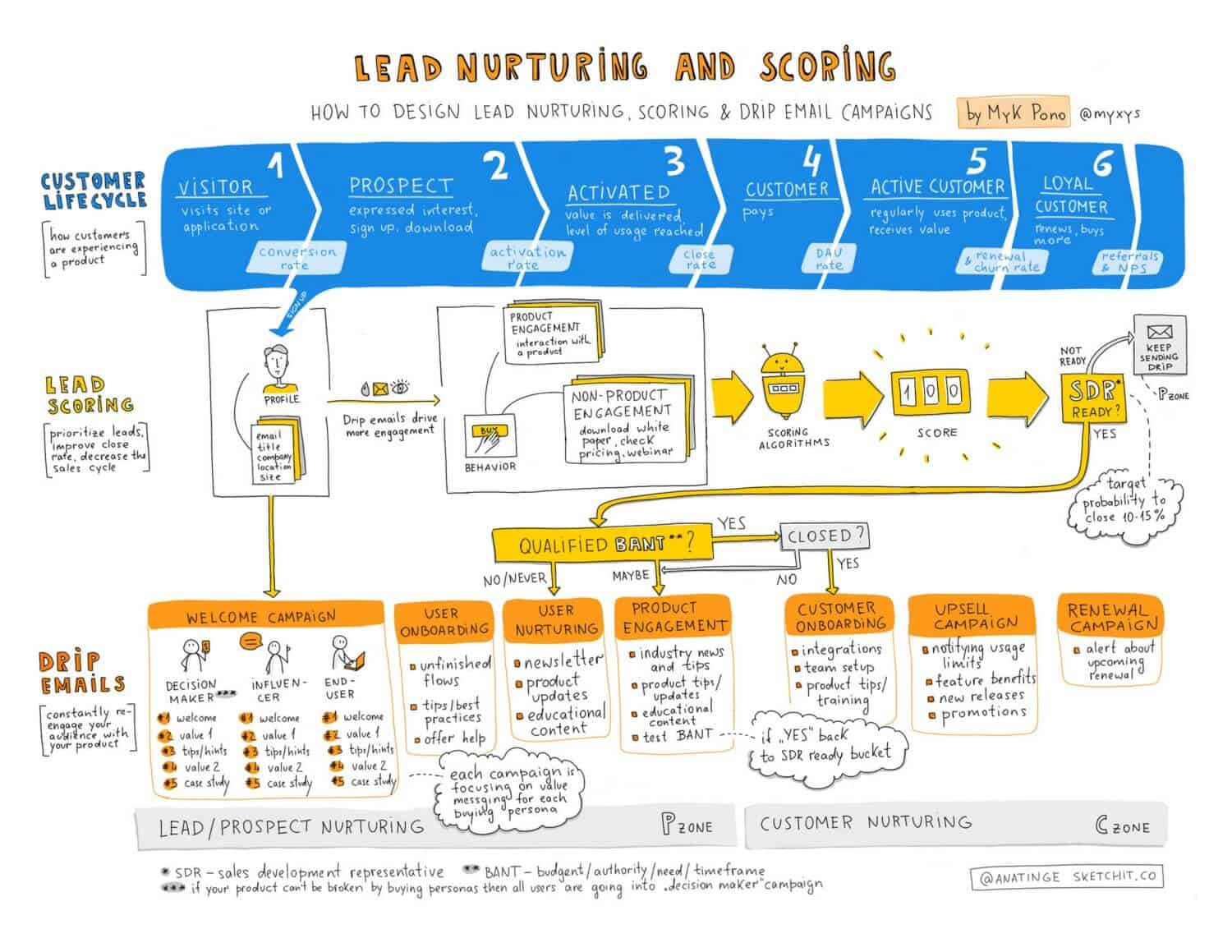
Now let’s look at lead scoring. Lead Scoring is the process of assigning scores to your prospects based on the profile and behavioural data you have about them.
The objective of lead scoring is to rank leads in order of importance, in order of priority, so that you can concentrate your efforts on the “best” contacts, improve your conversion rates and reduce the length of the buying cycle.
Since lead nurturing is a process of continuous communication (or interaction) with prospects that increases the chances of converting prospects into customers, it is quite logical to combine it with lead scoring. The two go together.
Lead Scoring allows sales to prioritise leads and marketing to measure the effectiveness of nurturing campaigns.
Depending on the stage of development your company is in, your lead nurturing and lead scoring strategies will differ. Lead Scoring is more or less relevant depending on the stage of development of your organisation. For the sake of simplicity, we can define three stages of a company’s development:
- The seed phase, which corresponds to the search for the Product-Market Fit. The company seeks to create a viable service or product, to establish the “proof” of its concept.
- The growth phase, during which the company gains market share and attracts new users.
- The maturity phase, during which the company focuses on optimising its offer.
Let’s be clear, in the seed phase, lead scoring is not the top priority. If you only generate two or three leads a day, you don’t need to score your leads.
However, it can be beneficial to implement a basic scoring system from the start. This will allow you to collect information about the buying journey of your prospects. When you reach the growth phase, you will have several months/years of historical data at your disposal that will allow you to optimise your lead scoring system more quickly.
At the beginning, therefore, try to track as many user actions as possible on your product. This will allow you to establish statistical correlations, to identify the behavioural patterns that are associated with the highest conversion rates.
Download our free lead scorer to qualify your leads easily & for free 👇
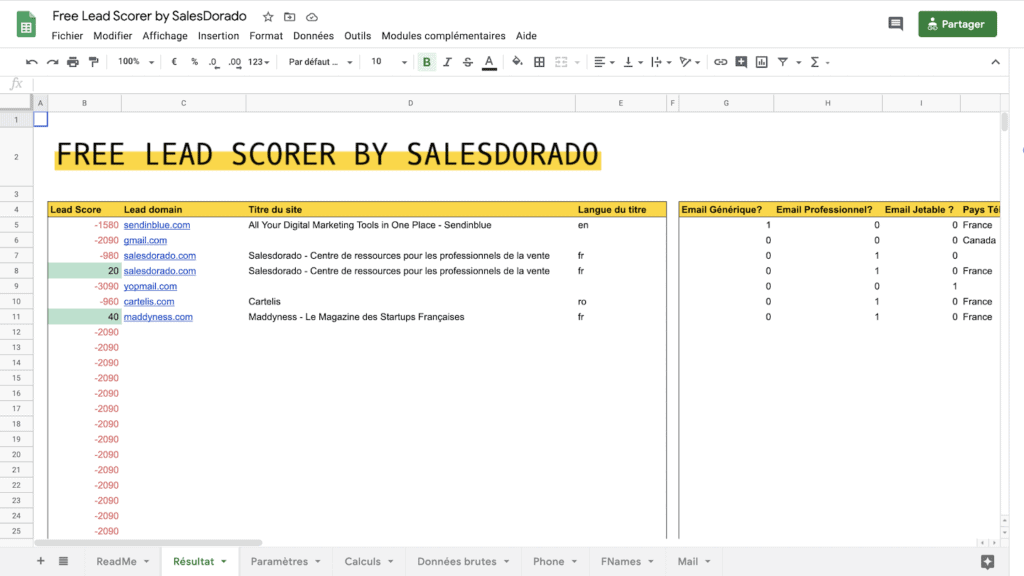
It is during the growth phase of your user base that lead scoring comes into its own. You receive dozens, even hundreds of leads per day: it becomes urgent to set up a scoring system to identify prospects with a specific pain point from those who need to be educated about the problems and their solutions (in other words: who need to be “nurtured”, or “warmed up”).
Scoring becomes essential at this stage to enable you to make the best use of your resources.
In the growth phase of your company, lead nurturing can evolve from basic communication to more targeted communication based on profile segmentation. For example, by setting up separate automated scenarios for each profile. For example, in the priming phase, when a prospect signs up, the company may be tempted to send the same sequence of automated emails to everyone.
In the growth phase, the company may decide to deploy several separate campaigns: one targeted at decision-makers, another at influencers, one at prospects in the financial sector, etc. Communications can be segmented according to the roles of the prospects, the sectors of activity and the needs identified.
In the final, mature phase, companies should have robust and proven lead nurturing and lead scoring systems in place. At this stage, the company has enough data to build robust models and segment its campaigns in greater depth.
Find out how to build a Lead Scoring strategy.
The heart of a Lead Scoring system: the Fit / Pain pair
Before going into the details of the different scoring systems, let’s recall the objective of Lead Scoring: to help the company prioritise leads, improve its conversion rates and reduce the length of sales cycles. Several reports show that salespeople spend only about a third of their time doing what they add value to: selling, interacting with prospects or customers.
Lead Scoring improves sales productivity by focusing on prospects with the highest potential Lifetime value. Prioritisation allows the company to use its resources more efficiently: salespeople spend more time on prospects that have a real chance of converting.
Mark Roberge, former CRO ofHubspot and now a professor at Harvard, has proposed a rather interesting perspective of lead analysis in his book “The Sales Acceleration Formula”. He proposes to analyse leads based on the duo “Fit” and “Pain”. This analysis applies to both inbound and outbound leads. But the pattern is different in both cases:
- In outbound, we start from the Fit and go to the Bread. The company promotes a product en masse and then identifies whether the leads encounter the problem that the product solves.
- In inbound, on the other hand, we start from the Bread and work towards the Fit. In other words, the prospect has identified a pain point, a problem for which he is looking for a solution and which leads him to the company. It is then up to the company to qualify the lead and determine whether it is suitable (fit) for the company.
The higher the proportion of inbound leads, the more important lead scoring becomes. In fact, it is mainly inbound leads that should be prioritised.

Lead Scoring, according to Mark Roberge, is essentially a marketing approach, based on a scientific methodology, which consists of evaluating fit and bread. It answers the following two questions:
- Concerning the “bread”: Does the prospect experience the problem that our product solves? How important is this problem compared to other problems and challenges the prospect faces on a daily basis?
- Regarding fit: Does this prospect fit our target audience? Do they have the budget to acquire our product? Do they have sufficient internal resources to implement the product in their organisation?
The whole construction of a lead scoring system can be summed up by defining what the company means by “fit” and “pain”. In scoring, the score tells you how well a prospect fits your target audience, and what problem the lead has based on the behavioural data you have available. In short:
Lead Score = Fit Score + Pain Score
Discover our complete guide to Lead Qualification.
How to set up a Lead Scoring system?
The most common method of setting up a lead scoring system is to use numerical values to assign a score to each lead and then to classify the leads into three or four categories according to their score: A, B, C, D or “Hot”, “Warm”, “Cold”. For example, you could have:
- A Leads = Score of 100 and above = Lead ready to be passed on to sales
- B Leads = Score between 75 and 99
- C Leads = Score between 50 and 74
- Leads D = Score less than 50
The problem with this classic approach is that while everyone agrees on the understanding of what an A lead is (= a hot lead, ready to be passed on to the sales department), there is often little clear consensus on the difference between B, C and D leads. For this reason, we recommend a simpler classification, with only two categories:
- Sales-ready leads (= SDR-ready)
- Leads that are not yet ready for transmission.
Numerical values can then be used to differentiate leads that are not ready to be passed on according to their maturity level. Numerical scoring is, in our opinion, much more relevant than category scoring. It allows a much more granular analysis.
Discover 20 high potential lead generation techniques.
What is a mature lead (SDR-ready)?
A lead is mature when it has reached a certain level of fit and breadth that qualifies it as ready to be contacted by a salesperson. If you are new to lead scoring, you will need to analyse what actions and behavioural patterns lead a prospect to buy. Ideally, your definition of a mature lead should be correlated with a conversion rate of 10-15%. This means, in concrete terms, that between 10 and 15% of leads that reach the SDR-ready stage end up buying. To optimise your SDR-ready, you will need to test and refine your model gradually. You can raise or lower the maturity threshold depending on the workload the sales team can handle. The relationship between target score (maturity score) and potential conversion rate is important. If you choose a threshold that is too low (8-10% conversion), your team may waste time qualifying leads that will not convert. Increasing the maturity threshold (15-20%), on the other hand, requires a longer lead nurturing process. The first option increases the workload of the salesperson, the second that of the marketing team. The qualification threshold at which a lead is qualified is mature varies from company to company. There is no hard and fast rule. Within each organisation, this threshold should be refined gradually, as you gain experience and test.
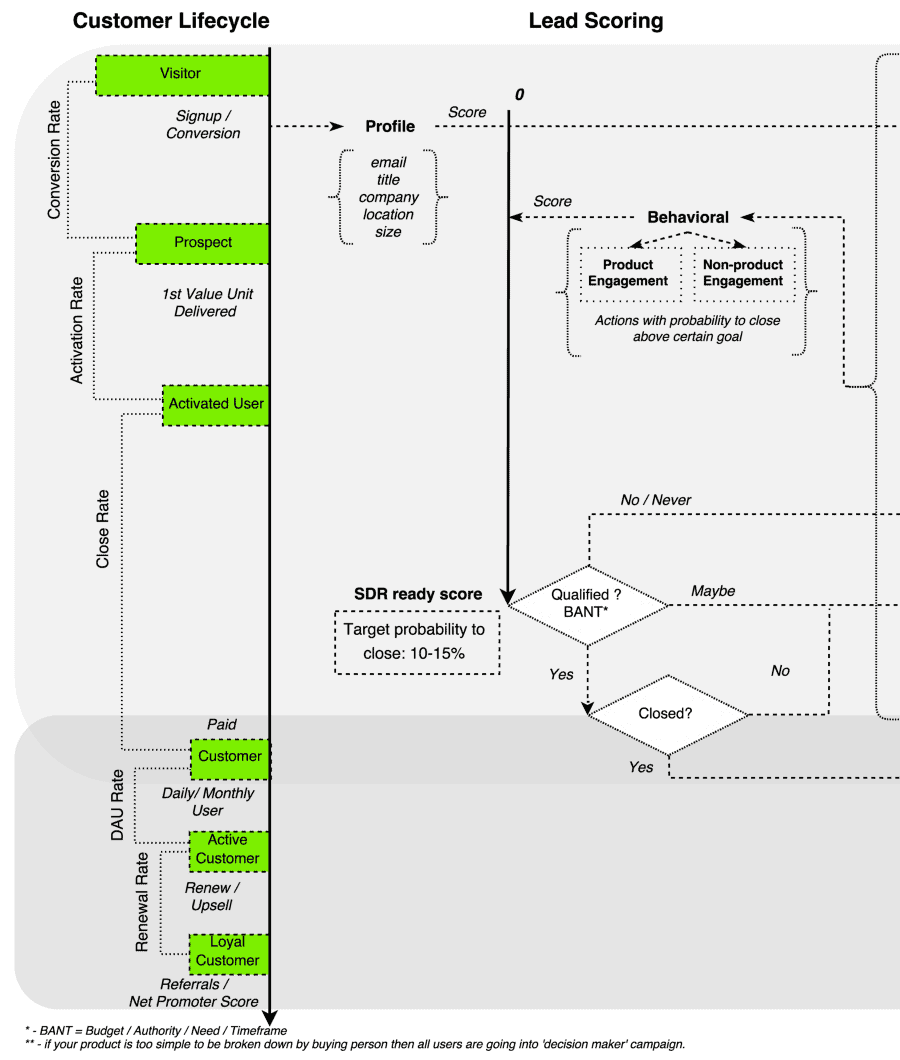
What factors are taken into account in calculating the score?
Let’s go back to our equation: Lead Score = Fit Score + Pain Score. An effective lead scoring strategy requires the use of two categories of data:
- Profile / demographic data, to qualify the fit
- Behavioural data, to qualify the bread.

Profile data – demographic
Profile or demographic data is globally static data and is used very early on after the prospect has entered your marketing automation tool or CRM. Here are the 5 most important demographics in B2B:
- The email. You need to consider whether it is a personal or business address. Email addresses should be scored higher as giving a business address means that the prospect is willing to communicate with you on a corporate level.
- The position. You can obtain this information by asking your prospects, by searching for it on the internet or by using a contact list enhancement solution. The higher the position in the company’s organisation chart, the higher the score the prospect should receive. But the position of the prospect in the company is not only used for scoring. It helps to identify the role of the prospect in the buying process. We advise you to create a different email sequence for each status: decision maker, influencer, end user. We will come back to this point later.
- The company. It is important to know the exact name of the company, as this will tell you whether or not the company is part of your target audience. If it is, you can assign a higher score to the prospect.
- Location. This is an important criterion as few companies distribute their products worldwide. And even if your company does, not all markets are the same and do not have the same potential. Location can therefore clearly be used for scoring.
- Size. Size is a very important criterion for estimating the purchasing power of the company and the potential income. It is not always the overall size of the company that matters most. For example, if you sell a SaaS solution for salespeople, it may be interesting to know the size of the sales department.
Depending on the company and the product marketed, the importance and weight of each of these characteristics will be higher or lower. The difference in their weighting will have an impact on the scoring.
Discover the 50 best prospecting tools.
Behavioural data
Profile data is fairly easy to find and use in scoring. Finding and using behavioural data is much more complex. Firstly, because there are many more behavioural criteria than demographic criteria. Secondly, behavioural data is dynamic. It has to be updated regularly. In addition, there are not really any third party solutions for analysing behavioural data for use in scoring. There are a few tools that track how users of your product interact with the product, but only your internal team can make the link between user behaviour and conversion rate.
There are two main categories of behavioural data:
- Engagement data related to product usage = the data that tells us how prospects use the product. This is by far the most important behavioural data. There is a strong link between product usage and conversion probabilities.
- Commitment data not related to the use of the product, such as :
- Download a white paper.
- Registration for a webinar.
- The visit of the price list page, the FAQ, the knowledge base…
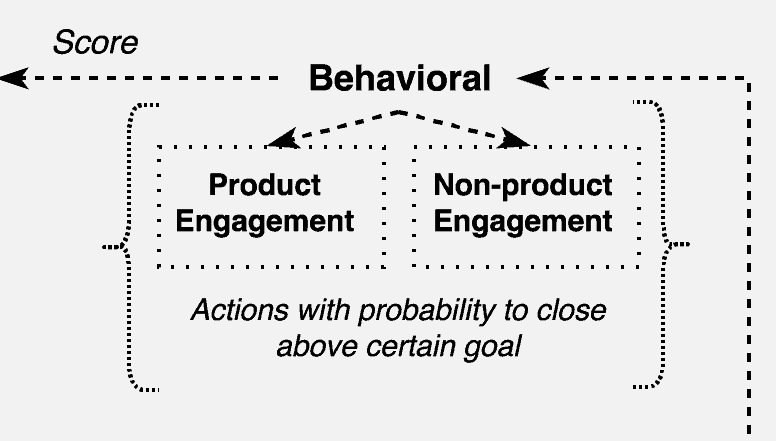
You should not fall into the trap of giving a score for all actions, even the most trivial ones, such as visiting the website, opening an email, clicking on a link in an email, etc. These actions require very little investment from the prospect and are rarely a sign of interest in the product. These actions require very little investment from the prospect and are rarely a sign of interest in the product. More often than not, they are simply driven by curiosity.
We advise you to set up a user-product interaction tracking system as early as possible, from the start-up phase of your business. This will allow you to have a history of data available when you build your lead scoring system during the development phase.
Find out how to set up and promote webinars to generate more leads.
What happens once the SDR-ready Score is reached?
Once your leads reach the SDR-ready stage, the handover between marketing and sales should be as fast as possible. In lead management, time is a factor in de-qualification. It is a good idea to set a rule that explains that sales people should make sure they contact SDR-ready leads within X hours. For example, 48 hours.
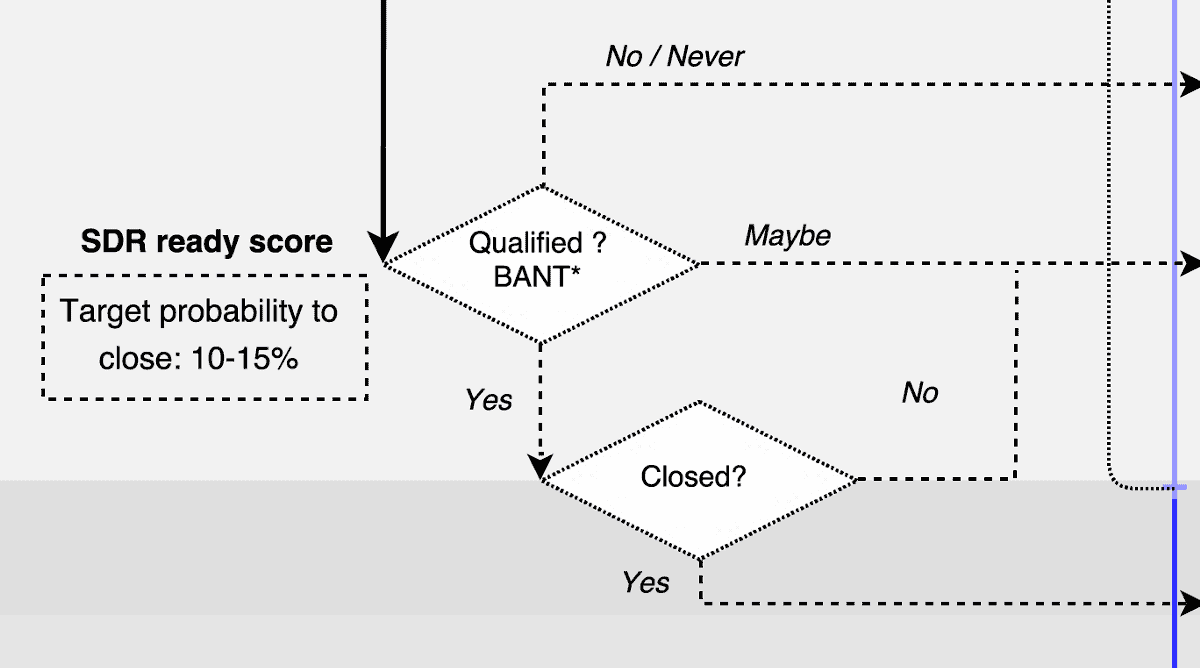
The SDR-ready leads can be classified into three categories after the qualification work of the sales staff:
- Yes – The prospect is qualified. They enter the sales pipeline. There are two possible outcomes: they convert (lead => customer) or not. If he converts, he moves from the Lead Nurturing stage to the Customer Nurturing stage. Onboarding campaigns can be triggered. If the prospect does not convert, you can add him to your "Product Engagement" campaign. This prospect may, in the future, become a customer. They should not be abandoned. Just because a prospect doesn’t buy right away doesn’t mean they will never buy.
- Maybe – the prospect is not sufficiently qualified. They may be qualified from a fit point of view (they fit your target audience), but not from a breadth point of view (their need is not consistent enough)…or vice versa. In this case, you can warm up these leads by sending them a sequence of emails focused on the objectives. We will come back to the nature and content of campaigns in detail later.
- No – the prospect will probably never convert. They are not sufficiently qualified in terms of both fit and bread. This doesn’t mean you can’t continue to send them email campaigns or score them, but if they decide to convert, they will do so on their own.
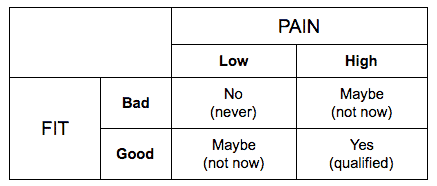
The question about the last category is simple: how come leads that do not fit the company’s target customer base and whose need is not consistent get into the hands of sales? How is it that they have passed the maturity threshold from a lead scoring point of view? There are several possibilities. Perhaps the lead is a competitor, a student or an investor who has researched your product. But if this happens often, there is probably a problem in your lead scoring system. Clearly, if more than 5% of the leads passed on to sales fall into the “will never convert” category, you need to adjust your lead scoring mechanism.
Discover the best tools for generating leads from LinkedIn.
The 4 big mistakes in lead scoring
In B2B, and especially in SaaS companies, lead nurturing and lead scoring are key elements of the strategy. And yet, few companies do it right. Here are the four most common mistakes in lead scoring:
Mistake #1 – Not tracking your leads’ behaviour in relation to your product or website
Again, you should not wait before tracking. Even if you are a start-up company and you manage a very limited volume of leads, you should anticipate and start collecting data now about the behaviour of your prospects in your product or on your website. This will help you more in building your lead scoring system.
Mistake #2 – Unnecessarily complicating the lead scoring process
Tell yourself now: you will not succeed in building the perfect Lead Scoring model from the start. So the best approach is to start simple and gradually adjust the model, the data/metrics used, the weights, etc. Avoid using a category scoring system (A, B, C, D…). Again, this complicates things and creates confusion. Time spent wondering whether a lead is B or C is time wasted.
Discover our complete guide to the art of setting up effective sales processes.
Mistake #3 – Scoring too many indicators
Avoid scoring more than 20 – 25 engagement indicators so that your scoring system does not become too complicated. We advise you to start with a number of indicators between 10 and 15. You can eliminate, for example, indicators whose impact on the conversion rate is less than X%, by setting the percentage in question. The objective is to integrate into the calculation of the overall score the elements and actions that have a significant impact on the conversion of leads to customers.
Mistake #4 – Relying on intuition
Most companies overestimate the weight of certain factors, based on experience and intuition. To implement an effective lead scoring system, it is important to leave intuition aside and base your choice of indicators on statistical analysis – even basic analysis.
The main automated scenarios to warm up your leads
In this final section, we will introduce you to predefined email sequences that are sent automatically based on triggers. These sequences allow you to nurture your leads, improve fit and bread qualification and develop your prospects’ engagement with your products.
Scripted email campaigns are the basic tool for lead nurturing. While marketers are often familiar with how automated scripts work, the importance of this tool for lead nurturing and lead scoring is often overlooked.
We will also see why segmentation can help you improve the performance of your campaigns.
A quick example of an automated scenario?
The series of emails that a prospect receives in the first week or two after signing up for the free trial period of a product. This is, in this case, a “welcome” scenario.
This is undoubtedly the most important scenario as it concerns the first interactions between you and your prospects. Another example is the sequence of emails sent following a purchase, where the first email is usually an order confirmation email.
Discover how to align sales and marketing with a pragmatic approach.
8 automated scenarios to increase lead engagement
We will now show you several examples of automated scenarios. These are eight very common scenarios. The list is obviously not exhaustive.
#1 The Welcome Campaigns
The objective of this scenario is to finalise a prospect’s registration to a service and to make them understand the main benefits of your product to make them want to go further. Here is an example of an email sequence:
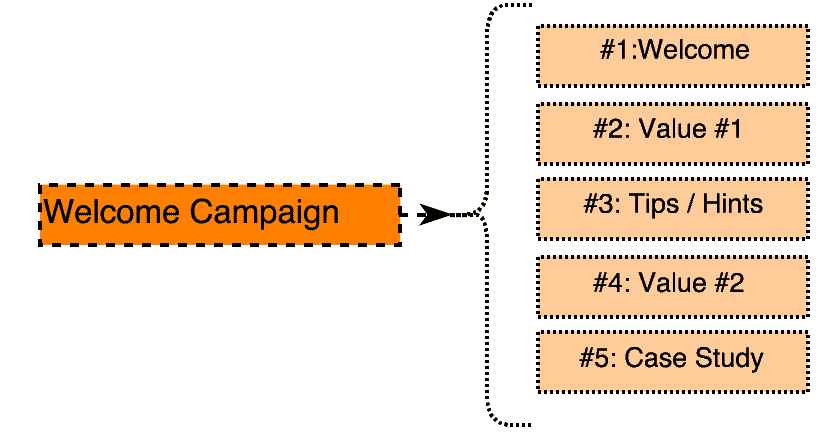
You can of course stop the sequence when the prospect becomes an active user. With this sequence, your prospect becomes familiar with your value proposition. The next step is to teach your prospect everything that can be done with your product to get the most out of it.
Find out how much it costs to set up a commercial CRM.
#2 New user onboarding campaigns
The aim of this second email sequence is to encourage the prospect to start using the product and to help them in their first steps.
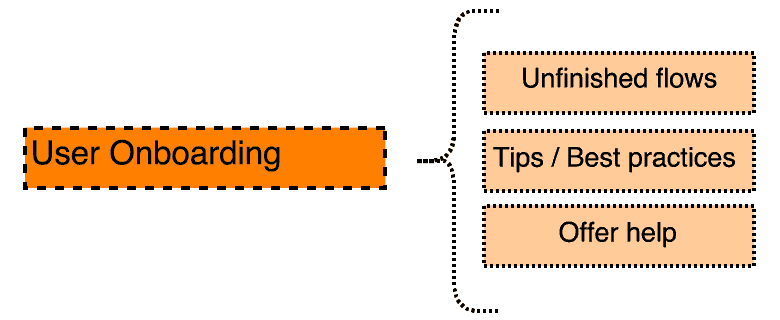
If the welcome campaign is used to make the prospect understand why the product is worth using, the onboarding campaign is used to explain to the prospect how to get the most out of the product by filling in information or taking their first steps in the product. Let’s take a very concrete example. When a user registers on LinkedIn, they receive a welcome email.
If that user does not log in to their account following registration, they receive a sequence of welcome emails to encourage them to return to LinkedIn. Now, if a user has signed up to LinkedIn and is using the tool but has not completed all the information associated with their profile, LinkedIn will trigger the onboarding scenario. These are emails explaining why and how filling in their profile will make better use of LinkedIn.
#3 Nurturing campaigns
The objective of this scenario is to turn a lead into a mature lead (SDR-ready) or to encourage them to test a product.
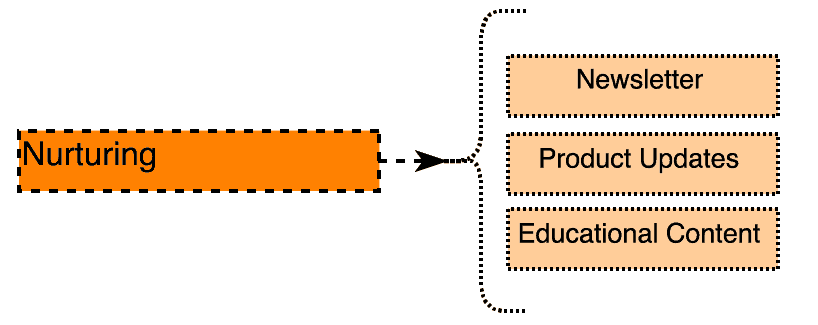
Not all prospects will land on the free trial page of your website. Offering downloadable materials, such as white papers, studies or case studies is another way to entice a prospect to sign up for your trial period. Depending on the nature of your product and the sales cycle, nurturing campaigns can have two objectives:
- If you offer a free trial period: increase the number of registrations for the trial period.
- If you don’t offer a free trial period: get prospects to reach the maturity score (resulting in a handover from marketing to sales).
#4 Campaigns to develop product engagement
The objective of such a scenario is to keep your prospects coming back to the product and to develop the level of engagement. This is a very important scenario for a SaaS business using a freemium model. Companies using this model need to ensure that customers who are not yet paying customers use the product and do so increasingly.
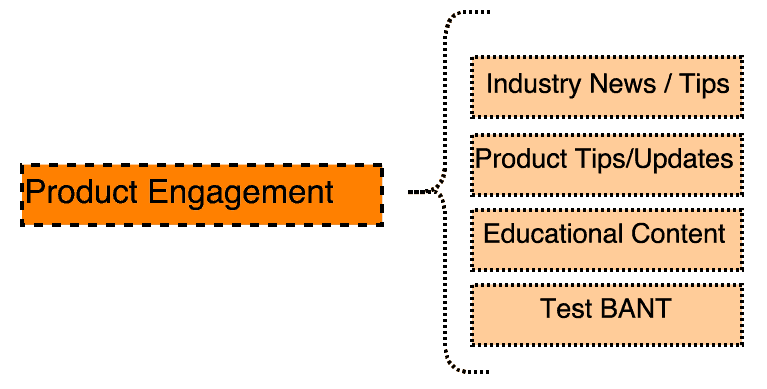
#5 New customer onboarding campaigns
This scenario is aimed at users who have just subscribed to a paying offer. The objective is to establish a link between the Customer Success team and the new paying customers. This is a customer nurturing campaign.
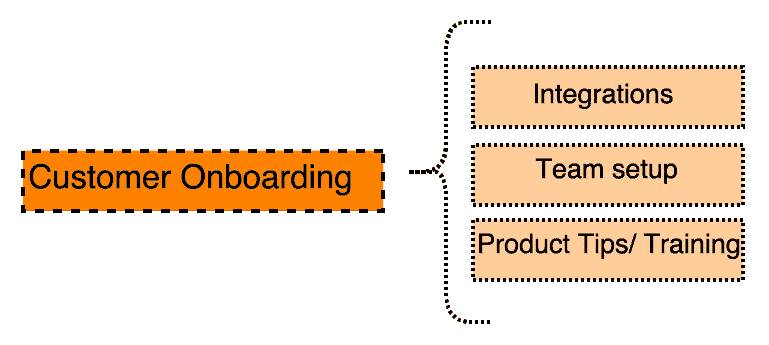
These emails aim to support the new customer in the full use of the product. For example, to help the customer integrate the tool with other services or platforms. You can propose in this type of scenario: appointments with the support team, webinars, tutorials, training, etc.
Find out why your lead scoring system is probably useless.
#6 Upsell campaigns
In such scenarios, the aim is to provide information on additional modules, features, services or paid products, to encourage the customer to upgrade to a higher subscription package.
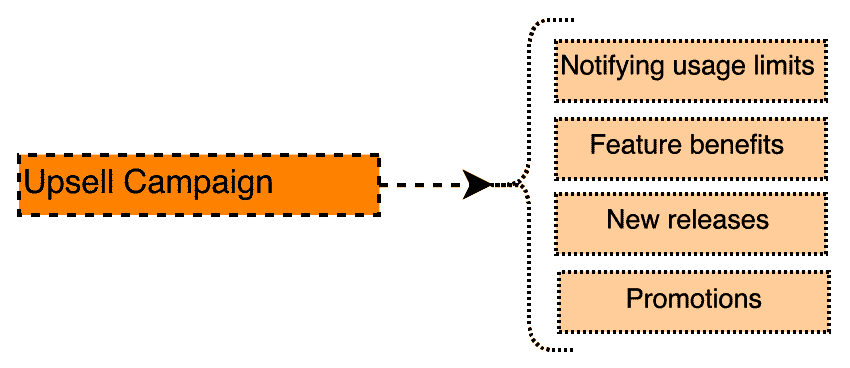
#7 Renewal campaigns
The aim here is to inform the customer that their subscription is about to expire and to encourage them to renew it.
#8 Transactional emails
Finally, don’t forget about email sequences sent in a transactional context. It is important to remember that transactional scenarios are also part of your lead nurturing arsenal. These can be emails that encourage your users to check their email, renew their password, download their invoices, etc.
Let’s look at how segmentation can help you improve the effectiveness of your automated scenarios.
Use segmentation to improve the effectiveness of your automated email sequences
Finally, let’s stress the importance of segmentation. If you have read the article so far, you probably think that lead scoring and automated scenarios are very complicated things to implement. Often it is, because companies want to put the cart before the horse.
The implementation of lead scoring and scripted campaigns must be gradual. It is a process.
You may well start with a welcome campaign containing two emails. You don’t have to be complicated at first.
As your company develops, you will mature your Lead Scoring system, enrich your automated scenarios, create new ones, refine your contact segmentation, etc.
Segmentation allows you to make your campaigns more effective and to improve the qualification of leads.
Ultimately, the objective of segmentation is to optimise conversion rates. But be careful not to make the mistake of pushing segmentation too far and ending up with insignificant audiences in each segment. Segmentation must be operational.
The time and money invested in the segmentation work should be less than the gains you get from it. We advise you to start with a simple segmentation and to measure the impact of your segmentations on your KPIs (opening rate, click rate…).
This will allow you to compare the performance of generic and segmented campaigns.
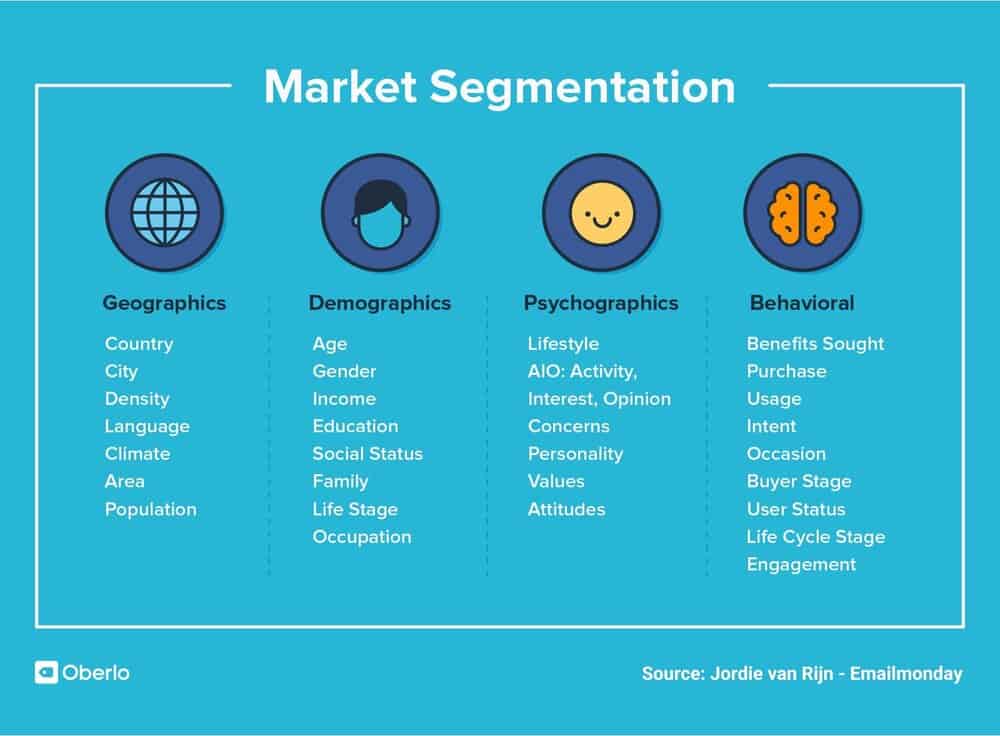
Why do we need to do segmentation? Because not all customers have the same needs and expectations. Segmentation allows us to send more relevant messages, and therefore more effective in the transformation process.
We will not go into the details of the segmentation work here, so as not to lengthen an article that is already quite long. We will limit ourselves to a few tips. We will certainly have the opportunity to come back to this aspect in more detail in future articles.
Segmentation in lead nurturing campaigns can be based on the role of the prospect: decision maker, influencer, end user. These three types of people are not addressed in the same way. You can also create a segmentation based on sectors of activity: retail, travel, finance, education… As we said earlier, we advise you to start simple.
In the start-up phase of your business, you can be content to send the same campaigns to all your leads.
Then you can start by segmenting according to the role of the lead in the company: decision maker, influencer and end user.
Later on, you can refine your segmentation by adding the “sector of activity” segmentation.
And later on, you can further refine your campaigns by segmenting them according to geographical area, products, lead behaviour, etc.
But, and this is our main advice, you should not start with ultra-rich segmentation straight away. Take a gradual approach.
Conclusion
We hope this guide has helped you to better understand the issues around lead nurturing, lead scoring and automated email scenarios. Here is a summary of what we have covered:
- Nurturing is a process of continuous communication between the company and its prospects (Lead Nurturing) or customers (Customer Nurturing)
- The objective of Lead Scoring is to help sales people prioritise their work, improve conversion rates and reduce sales cycle time. The best approach to implementing a lead scoring system depends on the maturity of the company.
- Lead Scoring can be summarised as a quantitative fit and pain analysis based on the profile and behavioural data you have on your leads.
- The big mistakes to avoid when doing lead scoring: waiting too long to start tracking user behaviour, creating too many lead categories and scoring too many items.
- Email campaigns based on automated scenarios allow you to continuously develop your audience’s engagement with your product.
- Segmenting your email campaigns gradually will increase their effectiveness and ultimately improve your performance indicators.

